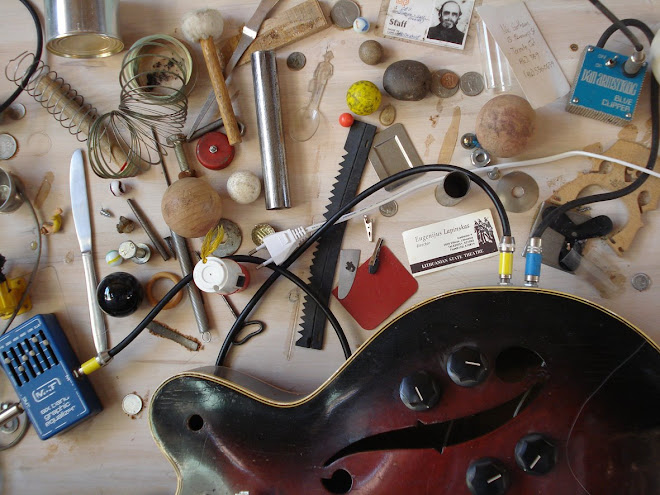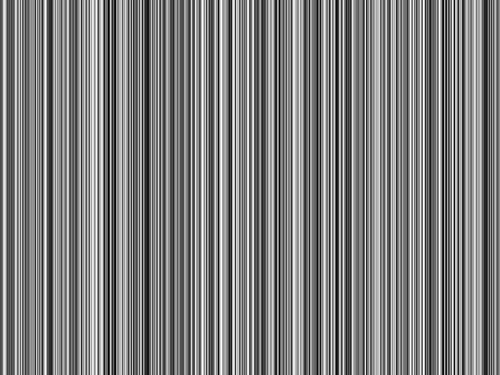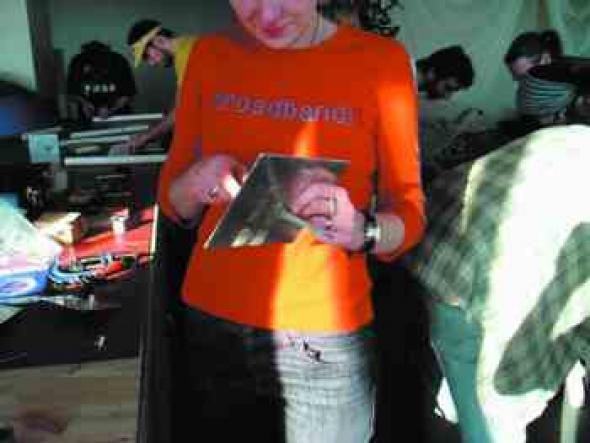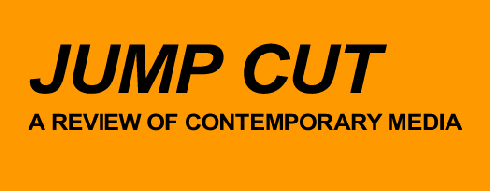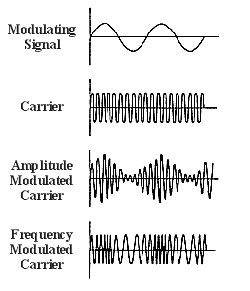The Musicircus happening took place in the University of Illinois stock pavilion. John Cage positioned the audience and performers in a way that reflected the facility's standard use as an arena for judging livestock. The performers were placed on raised platforms to mimic the judges, who typically sat in the stands above the central arena, while the audience took on the role of livestock roaming around the floor. Cage worked with artist William Wegman to create some of the inflatables that were installed at the pavilion as well as other composers and performers from the University.
Friday 31 October 2014
Monday 27 October 2014
Solfeggio tones
Solfeggio frequencies make up the ancient 6-tone scale thought to have been used in sacred music, including the beautiful and well known Gregorian Chants. The chants and their special tones were believed to impart spiritual blessings when sung in harmony. Each Solfeggio tone is comprised of a frequency required to balance your energy and keep your body, mind and spirit in perfect harmony.
Sunday 26 October 2014
Patepluma Radio
Welcome to Patepluma! The emphasis here is on Latin American culture and broadcasting. But, there is also material on broadcasting in other parts of the world plus general information on the DX radio listening hobby, particularly short wave. Please browse through the menus. Your comments and suggestions will be appreciated!
The Forgotten Story of Royal Raymond Rife
Royal Raymond Rife (May 16, 1888 – August 5, 1971) was an American inventor and early exponent of high-magnification time-lapse cine-micrography.In the 1930s, he claimed that by using a specially designed optical microscope, he could observe microbes which were too small to visualize with previously existing technology. Rife also reported that a 'beam ray' device of his invention could weaken or destroy the pathogens by energetically exciting destructive resonances in their constituent chemicals.
Rife's claims could not be independently replicated,[5] and were ultimately discredited by the medical profession in the 1950s. Rife blamed the scientific rejection of his claims on a conspiracy involving the American Medical Association (AMA), the Department of Public Health, and other elements of "organized medicine", which had "brainwashed" potential supporters of his devices.
Thursday 23 October 2014
Wednesday 22 October 2014
Throwing Shade - NTS Radio
A DJ, producer and barrister from London, when Throwing Shade isn't in court she's making or playing music. Having studied ethnomusicology at university, her show is a place for her to share rare field recordings and other sounds from around the world.
NAISA
New Adventures in Sound Art (NAISA) is a non-profit organization, based in Toronto, that presents performances and installations spanning the entire spectrum of electroacoustic and experimental sound art. NAISA’s annual events include: the Deep Wireless Festival of Radio & Transmission Art in May, the Sound Travels Festival of Sound Art in August, NAISA’s participation in the international Art’s Birthday celebration in January, as well as the NAISA Sound Bash Series in March and the SOUNDplay series in November. The objectives of NAISA are to foster awareness and understanding locally, as well as nationally and internationally, in the cultural vitality of experimental sound art in its myriad forms of expression. This objective will be achieved through the exploration of new sound technologies in conjunction with the creation of cultural events and artifacts.
Scattered Frequencies
Scattered Frequencies: Radio Networking in Nepal from Sourcefabric on Vimeo.
Only recently, the Nepalese government started issuing licenses for independent radio stations. Since then, a group of journalists have been pooling resources and efforts towards establishing a self-sustainable media network for the only widely accessible medium in Nepal: radio. Accompany the radio makers on their tour through parts of Nepal, visiting some of the partner stations. (2002)
Scattered Frequencies is an ongoing documentary project, following independent radios in different stages of their development. It attempts to illustrate possibilities and difficulties of establishing independent radio networks.
A project by: Micz Flor & Philip Scheffner
Assembled at: pong-berlin, 2002
Assembled at: pong-berlin, 2002
Wireless Technologies
NETWORK THE PEOPLE
By Simon Worthington, James Stevens and Bruce M.Simpson, 10 March 2002
Have you noticed the strange sight of Parcelforce workers delivering bundles of copper wire, sheets of aluminum, plastic tubing and reels of cable to inauspicious looking buildings of late? Or have you noticed the empty Jolt cans and pizza boxes overflowing from bin bags all over the city? We can confirm that these seemingly unrelated phenomena are in fact connected: the wireless network community has been born! For several years now, enthusiasts – fuelled by pure idealism and junk food – have been building local area networks, operating over licensed 802.11 wireless technology, to provide communities with broadbandwidth connections for next to no money. Inspired to join in the fray, Mute has recently started building too. Here we present some of the results, as well as a few words from those that inspired us – on technical and other matters
Jump Cut
JUMP CUT: A REVIEW OF CONTEMPORARY MEDIA is run on a nonprofit basis by its staff and is not affiliated with or supported by any institution. Begun in 1974 as a film publication, JUMP CUT now publishes material on film, television, video and related media and cultural analysis. As a print publication till 2001, JUMP CUT circulated 4000 copies per issue in North America and internationally to a wide range of readers including students, academics, media professionals, political activists, radicals interested in culture, film and video makers, and others interested in the radical analysis of mass culture and opposition media.
by Andrea Hammer
Tuesday 21 October 2014
Thursday 16 October 2014
Voices from the Barras
'Voices from the Barras' is a documentary film directed and edited by Alan Knight and produced by Abigail Howkins through Diversity Films as part of 'The Barras Story' - a community heritage and learning project using archive photography, film and oral history to explore the social, cultural, historical and economic importance of the world famous Barras Market to the East End of Glasgow.
Set-up in 1921 by Maggie McIver, the traders and past customers today remember the market’s hey-day, when ‘spielers’ would turn selling into a stage show, shifting their wares as quickly as their razor-sharp patter would allow. People once came from all over Scotland to search for bargains at the Barras.
The project focused on collecting Barras community memories and stories, past and present from traders, stallholders, family members and customers. It brought together a group of community members interested in research, oral history and film production.
Led by filmmakers, Abigail Howkins and Alan Knight, the project culminated in a 25-minute documentary called ‘Voices from The Barras’ which screened around local venues in the East End of Glasgow, including The Barras itself and project partner The People’s Palace, alongside an exhibition featuring photographs by Alan Knight and Julia Bauer as well as archive photos and materials found during the process.
Chris Leslie - Paddy's Market
Paddy's Market, which lies in the heart of Glasgow has been a local institution for over 200 years. The flea market has served generations of the city's poor, unemployed and its immigrant population. Glasgow City Council is poised to take over the lease of the Paddy's Market site and could shut it down by the Autumn. Citing crime and drug dealing in the area, the council claim the market is a 'crime ridden midden.'
Media reports and the council have totally misrepresented the crime rate in the market. The drugs and crime have nothing to with the honest, hard working traders of the market. All the crime and drug use can be attributed to residents of a hostel for drug addicts which neighbours the market.
In reality the real issue is financial and real estate and the dehumanisation of the market is being used to push public opinion to accept the closure. Masked as a 'regeneration' project, this would be the loss of a unique local institution and lifeline to thousands of Glaswegians.
Wednesday 8 October 2014
Interview: Paul “Groucho” Smykle
Very much a behind the scenes figure, Paul ‘Groucho’ Smykle mixed some of the most intense dub works to be released during the ’80s and ’90s. As one of Island Records’ in-house engineers, dubmaster Groucho etched his mark on prime works by Black Uhuru, Sly and Robbie and Ini Kamoze, and was probably the first mixer to subject African music to the extreme sonic textures of dub.
Saturday 4 October 2014
London's Pirate Pioneers - 25th September 2014
Listen back to an incredible documentary by AM/FM covering the story of London’s pirate radio stations from 1980 to 1989. The show traces the history of the broadcasters through clips, music and contemporary news reports and interviews.
Thursday 2 October 2014
FOOD (1972) – Gordon Matta-Clark's Restaurant
FOOD (1972) on UBUWEB
Kite & Laslett
Kite & Laslett is an interdisciplinary art practice based in London. The duo; Sebastian Kite and Will Laslett, trained in architecture and music, create experiential environments to choreograph the sensory engagement of people with architectural spaces. Conceptually, Kite & Laslett’s work is rooted in investigations into paradigms of perception and phenomenology. Their practice lies at the intersection of art and architecture, with a particular focus on site-specificity. Kite & Laslett’s installations use structure, kinetics, light, projection and sound as strategies to illustrate new readings of spaces. Inherent to their work is a passion for precision, technical efficiency, inventive materials and elegance.
Since graduating as architects in 2010 (Glasgow School of Art, Westminster School of Architecture), Sebastian and Will established Kite & Laslett, a creative arts and design duo in London. Whilst constructing their own houses and studio inside the shell of a disused warehouse, the duo established their practice. Their studio provides the space and inspiration for rigorous experimentation and prototype making. From technical drawings via engineering solutions through construction to installation, and finally, photographic documentation, the duo possess the skills to realise their ambitious ideas self-sufficiently from concept to fruition. Inherent to their work is a passion for precision, technical efficiency, inventive materials and elegance.
Manual for the construction of a sound as a device to elaborate social connection
Edited by Brandon LaBelle Surface Tension Supplement No. 4
Organized as a temporary working group, the Manual project set out to explore sound and auditory experience as platforms for social meeting, urban intervention and environmental investigation. Developed in collaboration with Atelier Nord and the Ultima festival and staged in Oslo in 2009, the project brought together six artists from around Europe engaged in experimental media practices. The project functioned as a series of process-oriented field studies of the city, involving locational research, performative actions and public discussion. Such an approach aimed to use sound as a process of temporal and social exchange. The works involved supplemented objective perspectives with face-to-face interactions, secret interventions, and transmissions so as to bring forward amplifications of city life.
Including artistic works and materials by Siri Austeen (Norway), Brandon LaBelle(US/Germany), Tao G. Vrhovec Sambolec (Slovenia/Holland), Kristina Lindström & Åsa Ståhl (Sweden), and Jana Winderen (Norway).
http://www.errantbodies.org/main.html
http://errantbodiesspace.blogspot.co.uk/
THE HAPPY HYPOCRITE – FREEDOM, ISSUE 6
‘I think: Protect me from people who want to protect me; but more, save me from people who know what upsets others.’ - Lynne Tillman
This new issue of The Happy Hypocrite challenges the restraining notions found in art and writing about who and what can and cannot speak. What can and cannot be said or thought. In part a response to Kafka - to that which we don’t know has damaged us – freedom is presented as an important and urgent concept, and a complicated word, in which and beside which hypocrisy also resides. (Hypocrisy can be construed as a freedom). The Happy Hypocrite offers its pages to ingenious fictional, nonfictional, and visual responses to the various meanings of ‘freedom’.
Franz Kafka - The Metamorphosis and Other Stories
This collection brings together the stories that Kafka allowed to be published during his lifetime. To Max Brod, his literary executor, he wrote: “Of all my writings the only books that can stand are these.”
"Of all my writings the only books that can stand are these..." Kafka wrote to Max Bord, his literary executor. This volume brings together the stories that Kafka allowed to be published during his lifetime. These haunting tales established Franz Kafka as one of the seminal writers of the 20th century and endure because of their timeless depiction of the nightmare world of everyday life. Includes such classics as "The Metamorphosis," "In the Penal Colony," "A Hunger Artist," "A Country Doctor," and "The Judgment."
Bella Caledonia Newspaper & Website
"THE OPPOSITE OF OBEDIENCE ISN'T DISOBEDIENCE, IT'S INDEPENDENCE"
“Where is there a newspaper that champions independence as favoured, we are told by pollsters, by a majority of Scots? There is none. Never has been. It never ceases to amaze me that not one newspaper in Scotland supports the policy of independence supported by half of the six parties in Holyrood. That is not only anti-democratic, it is a disgrace to journalism and an affront to free speech.”
Wednesday 1 October 2014
The Upas Tree
The friends of humanity laying the axe to the upas tree of slavery, which is ever loaded with the sum of all villanies.
| Applied to anything baneful or of evil influence. The tradition is that a putrid stream rises from the tree which grows in the island of Java, and that whatever the vapour touches dies. This fable is chiefly due to Foersch, a Dutch physician, who published his narrative in 1783. “Not a tree,” he says, “nor blade of grass is to be found in the valley or surrounding mountains. Not a beast or bird, reptile or living thing, lives in the vicinity.” He adds that on “one occasion 1,600 refugees encamped within fourteen miles of it, and all but 300 died within two months.” This fable Darwin has perpetuated in his Loves of the Plants. Bennett has shown that the Dutchman’s account is a mere traveller’s tale, for the tree while growing is quite innocuous, though the juice may be used for poison; the whole neighbourhood is most richly covered with vegetation; men can fearlessly walk under the tree, and birds roost on its branches. A upas tree grows in Kew Gardens, and flourishes amidst other hot-house plants. |
Subscribe to:
Posts (Atom)
